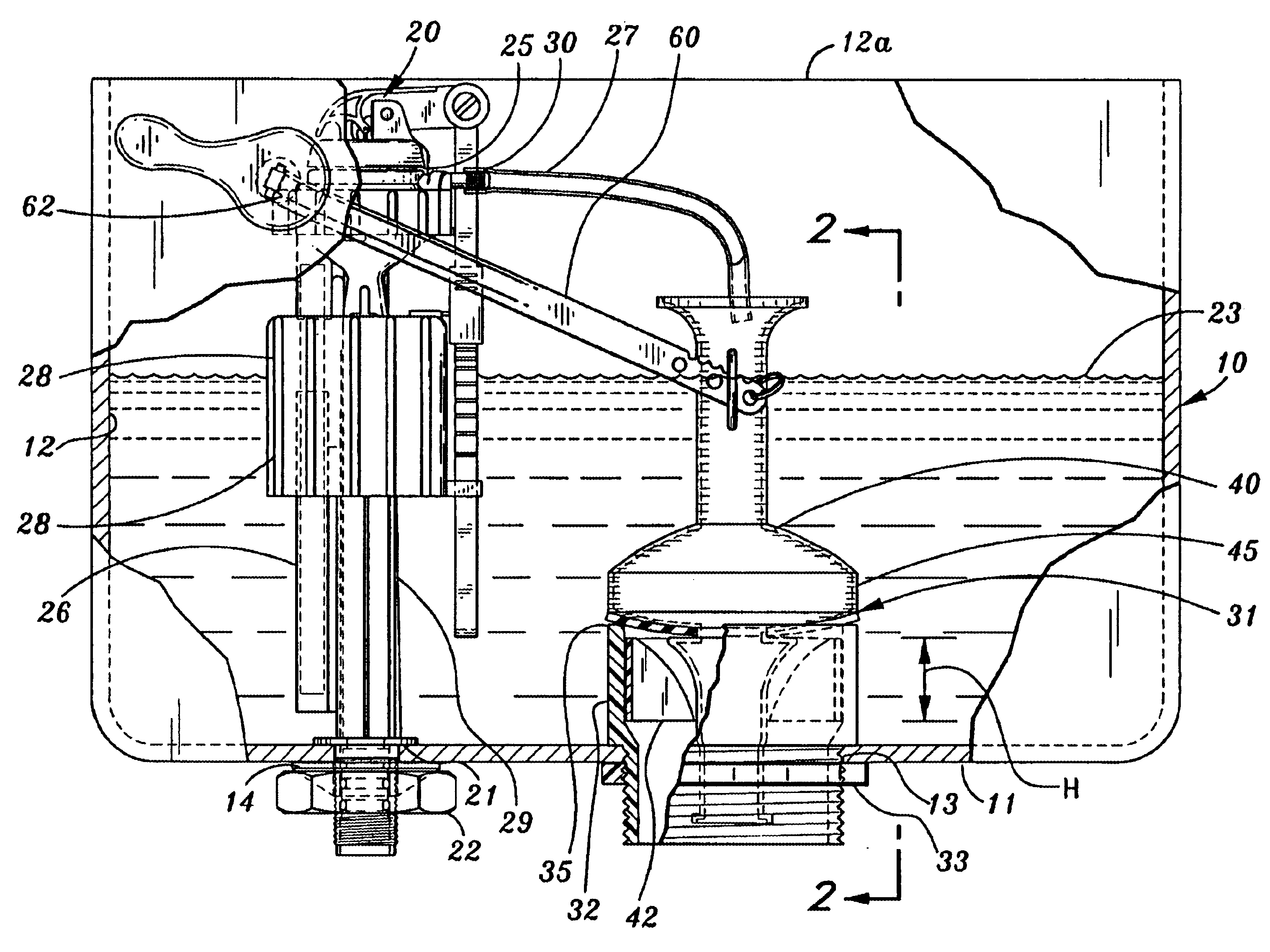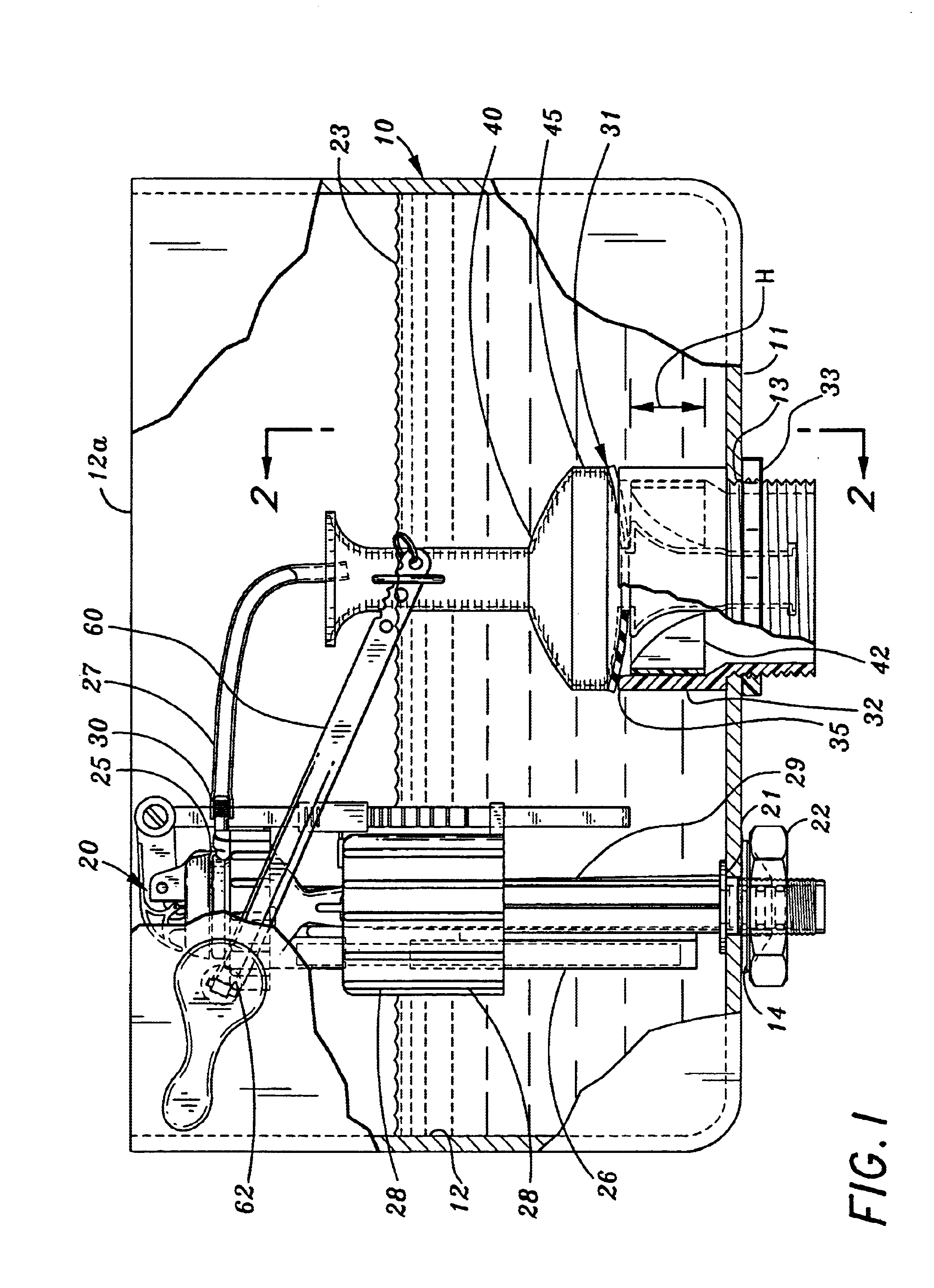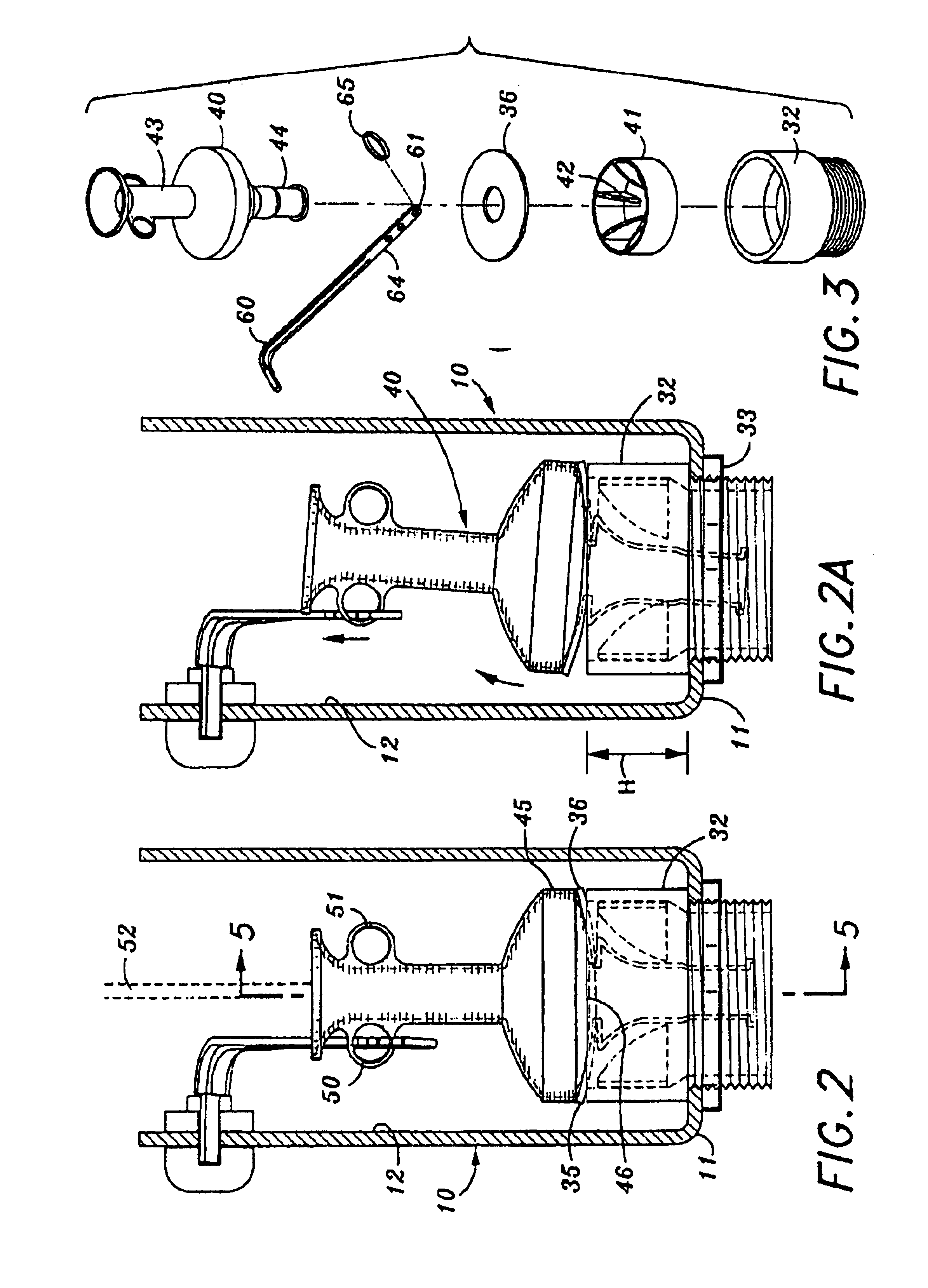Toilet tank valve
a technology for toilets and tanks, applied in water installations, flushing devices, constructions, etc., can solve the problems of high production cost, increased effluent from domestic systems, and disadvantages of low-cost countries, so as to reduce the differential pressure and reduce the ultimate force needed to open the valve
- Summary
- Abstract
- Description
- Claims
- Application Information
AI Technical Summary
Benefits of technology
Problems solved by technology
Method used
Image
Examples
Embodiment Construction
[0030]A toilet tank 10 has a bottom 11, a peripheral sidewall 12 and an open top 12a, which in use is covered by a removable lid (not shown). A central water discharge aperture 13 and an inlet aperture 14 are formed in the bottom of the tank.
[0031]A ballcock valve 20 is fitted in the inlet aperture by means of a typical spud 21 and nut 22. Any type of ballcock valve is suitable that provides the necessary functions of opening to flow when the water level 23 in the tank is below a predetermined elevation. At that time the valve workings 25 will supply water to the tank via a discharge tube 26, and to the toilet bowl through a bowl refill tube 27.
[0032]The illustrated valve is fully described in Antunez patent No. 6,244,292 which is incorporated herein in its entirety and made a part hereof by reference for its showing of the construction and operation of the valve workings.
[0033]A float 28 is wrapped partially around riser 29. Water under pressure is conveyed through the riser to the...
PUM
 Login to View More
Login to View More Abstract
Description
Claims
Application Information
 Login to View More
Login to View More - R&D
- Intellectual Property
- Life Sciences
- Materials
- Tech Scout
- Unparalleled Data Quality
- Higher Quality Content
- 60% Fewer Hallucinations
Browse by: Latest US Patents, China's latest patents, Technical Efficacy Thesaurus, Application Domain, Technology Topic, Popular Technical Reports.
© 2025 PatSnap. All rights reserved.Legal|Privacy policy|Modern Slavery Act Transparency Statement|Sitemap|About US| Contact US: help@patsnap.com



